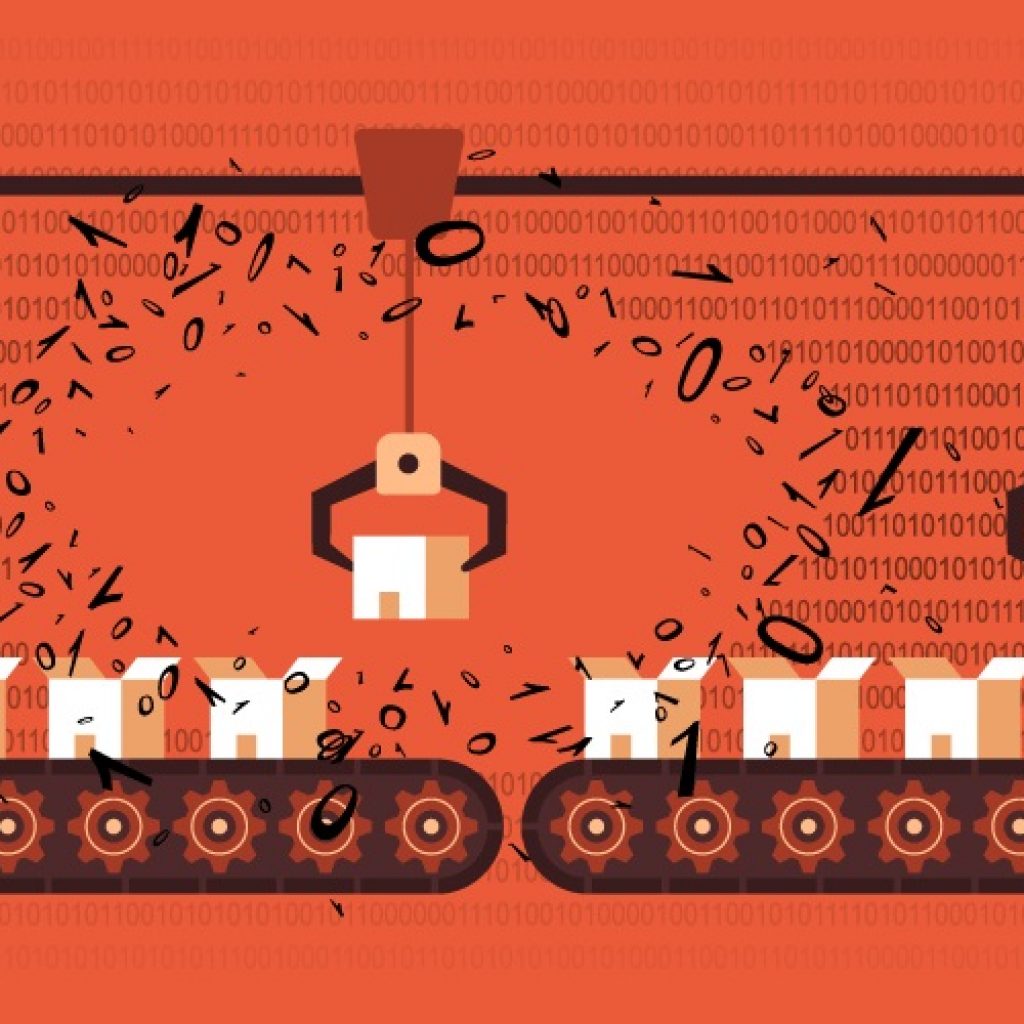The GSX exhibit hall features a variety of exhibitors, each sharing technological innovations designed to improve the world of security. Hear from exhibitor LifeRaft about their experiences in the past and what they’re looking forward to about GSX ’23.
ASIS International
Events at GSX 23
This year, GSX will host a variety of exciting events prior to and during the conference for attendees to participate in. Take a look at all the offerings for this year and decide what you want to be a part of!
Pre-Conference Workshops
On the Saturday and Sunday preceding GSX, ASIS will be hosting two workshops that are available to any attendees.
The Facility Security Design workshop takes place over two days (9-10 September) and focuses on cost-effective facility security designs. The course is designed for mid- to advanced-level security professionals and is particularly applicable to those involved in the design, specification, implementation, operation, and/or maintenance of security systems. Participants can earn up to 13.5 CPE credits for participation in the Pre-Conference Program and an additional 3.5 CPE credits upon completion of the online Essentials of Facility Security Design Certificate.
The Successfully Implementing an ESRM Approach into Your Organization workshop is an intensive one-day program on Sunday, 10 September, designed to help security practitioners begin to effectively implement an ESRM approach. This course is designed for security practitioners who already have some understanding of ESRM and will use the fundamental ESRM concepts as a foundation only and build in complexity and strategy as the day progresses. Participants can earn up to 6.5 CPE credits for participation in the Pre-Conference Workshop and an additional 3.5 CPE credits upon completion of the online Enterprise Security Risk Management (ESRM) Certificate.
Certification Review Programs
The weekend before the conference, ASIS will host two-day in-person review sessions for the CPP, PCI, and PSP. Each review will take place from 8:00 am – 4:30 pm CT on Saturday and 8:00 am – 4:00 pm CT on Sunday, and participants will receive up to 13.5 CPEs upon completion.
The review courses are designed to provide a high-level overview of the relevant certification knowledge domains in an environment that facilitates professional knowledge assessments, discussions with colleagues, and guidance from board-certified instructors who have proven themselves in the field.
Secure Horizons: An Immersive Experience for Senior Security Executives
Secure Horizons is a two-day event, exclusive to CSO Center members, that will take place the weekend prior to GSX. Intentionally designed through a senior security executive lens, the two-day experience will encourage insights, skills, and networking to elevate the status of security professionals in the C-suite and beyond. Lida Citroën, CEO of LIDA360, LLC, will be the program’s keynote speaker and facilitator. Attendees will also earn 11.5 CPEs.
ASIS Volunteers Day
The new ASIS Volunteers Day is a day all about the wonderful volunteers that make ASIS the vibrant community it is. The in-person event will allow ASIS members from across the world to meet and connect with each other, as well as engage with the community, and get excited for the coming conference and year! The event will be on Sunday, 10 September from 12:00 pm CT until 4:30 CT, when it will roll into the ASIS Awards of Excellence.
ASIS Awards of Excellence and the OSPAs
Starting at 5:00 pm CT on Sunday, 10 September, ASIS will host the joint ASIS Awards of Excellence and the Outstanding Security Performance Awards (OSPAs). These awards honor those who have gone above and beyond in the security profession and the ASIS community. Awards nominations are still open, and will be until 15 June, so consider nominating someone! Tickets for the event are included with the GSX All-Access pass, are also available separately upon registration, and will be available onsite.
WiS and NextGen Happy Hour
On Monday evening, the Women in Security and NextGen communities will be hosting a happy hour celebration at the Omni hotel. This event will be exclusive to community members. Registration will be available closer to GSX in the community forums on ASIS Connects, so keep an eye out!
Mentor Speed Networking
Tuesday morning at 10:30 am CT, ASIS will host speed networking. The event will run for one hour and fifteen minutes and give each potential mentee ten opportunities to find a mentor that matches their goals. Registration for this event will open soon, so keep an eye out in the ASIS Connects GSX 2023 Community!
ASIS Celebrates!
We’re celebrating YOU! Join ASIS Tuesday night for ASIS Celebrates! The event will be held at the House of Blues and will be a perfect opportunity to network, make new friends, and enjoy a night of well-deserved festivities. A ticket to ASIS Celebrates! is included with a GSX All-Access pass.
Military and Law Enforcement Appreciation Day
On Wednesday, 13 September, ASIS will honor Military and Law Enforcement Appreciation Day (MLEAD) by giving all law enforcement, military, and first responders a free one-day pass to GSX. For any active-duty or retired law enforcement, military, and first responders interested in attending MLEAD on Wednesday, you can register with the code SERVE.
Outstanding Keynotes for GSX 2023 Announced
Join us at Global Security Exchange 2023 to hear from extraordinary speakers from around the globe, including our three general sessions keynote speakers. Radosław “Radek” Sikorski will kick the event off on Monday morning, followed by President George W. Bush on Tuesday, and Tracy Walder, a former CIA officer and FBI special agent, will be the final keynote on Wednesday.
Radek Sikorski is currently representing Poland in the European Parliament, but has previously served as Poland’s minister of defense, foreign minister, and speaker of parliament. Prior to his career in politics, Sikorski worked as a war reporter, covering conflicts in Afghanistan and Angola. In 1988, he was awarded the World Press Photo for spot news. While serving as foreign minister in 2012, Sikorski was also named as one of the Top 100 Global Thinkers by Foreign Policy magazine.
George W. Bush served as the 43rd president of the United States as well as the 46th governor of Texas. President Bush faced one of the greatest challenges in modern American history during his presidency when terrorists attacked the World Trade Center and the Pentagon building in September 2001. Drawing from his experiences in the White House, President Bush plans to share his perspective and insight on the most pressing global security issues facing the industry today in his Tuesday keynote address.
Tracy Walder worked as a Staff Operations Officer (SOO) for the CIA Counterterrorism Center Weapons of Mass Destruction Group, before transitioning to an FBI special agent. While at the CIA, Walder worked as a covert operative and traveled to Afghanistan, Jordan, Uzbekistan, Algeria, Morocco, Denmark, Sweden, Italy, and England. During her time with the FBI, Walder specialized in Chinese counterintelligence operations and helped to uncover a Chinese spy ring. During her Wednesday keynote at GSX, Walder will share her views on emerging threats in the Middle East and China and other aspects of the current geopolitical landscape.
Welcome to Dallas, from a Local
In anticipation of GSX 2023, ASIS member Christopher Almonrode shares insight into his hometown of Dallas and the dedicated security professionals behind it. Christopher is a retired law enforcement Sergeant and Global security leader specializing Security Integration Solutions. His prior history includes roles in Global Security Management at Heritage Auctions, Global Supply Leader at CBRE and Vice President at Robotic Assistance Devices. Prior to his security career, Christopher spent 18 years in law enforcement specializing in all aspects of Police Management and retired at the rank of Sergeant. Read on to learn more about the city of Dallas and register for GSX today!

The Lone Star State is home to over 30 million Americans and growing every day. As Texans love to say, if you’re not from the great state of Texas, you got here as fast as you could! Well known for our independent spirit, pride, and fierce convictions of faith, family, and freedom; to be “Texan” is a title our citizens hold dearly. From the early days of the Texas Revolution to present, a strong sense of individualism has been a tenet of Texas life reflected in everything from the political landscape to the business environment.
Serving as the business financial services center for the state, Dallas is home to some of the largest Fortune 500 companies in the U.S. These companies come from a vast swath of verticals, among them: Exxon Mobil, AT&T, American Airlines, Fluor, Mckesson, Energy Transfer, Texas Instruments, Kimberly Clark, Tenet Healthcare, and DR Horton. The business friendly environment in Texas paired with the rank of 5th fastest growing economy in the nation, continues to attract top-tier talent to the Lone Star State.
Among this talent are some of the brightest minds in Security, which work tirelessly to protect these firms, many of which are members of ASIS. Our ASIS North Texas team is a close group of professionals who call each other family and represent Guarding Companies, Data Centers Security, Integration, and Consulting. We cohesively join together and are passionate about the growth of our chapter, ensuring our members are engaged, informed, and refined as leaders through our teaching and network events.
The Dallas-Forth Worth (DFW) metropolitan area is the county’s largest landlocked metropolitan area. As such, there is no shortage of amazing things to do and see. Visitors can explore world-class museums and galleries in the nation’s largest urban arts district, or experience cowboy culture in the Fort Worth Stockyards. Don’t forget to check out the historic Stockyards Hotel, long-time hideout of the infamous crime duo Bonnie and Clyde! Finally, no trip to Texas is complete without a heaping plate of Texas Barbeque, delicious Tex-mex, and a frozen margarita! With its warm hospitality and friendly people, DFW is a destination that should not be missed by anyone attending the GSX Conference.
I am personally filled with excitement for this year’s GSX show coming to Dallas as I am a lifetime Texan. My great grandparents came here in a covered wagon in the late 1800’s to plant their roots and begin a growing family. I simply could not imagine being anywhere else. We embrace the tenacity and independence our great state and city are known for, and hope to display the welcoming warmth of our culture. All visitors can rest assured, you will be greeted with a warm smile, helpful spirit, and firm handshake.
Let me know how our ASIS North Texas chapter and I can personally help you in your journey to GSX. You can contact the Host Committee Chair Kelly Kehoe at [email protected].
I look forward to meeting all of you at GSX 2023!
Explore Dallas
Dallas is a thriving city filled with delicious food and tons of entertainment and attractions. Dallas also has a flourishing arts scene, from music to fashion to vintage antiques. Learn more about all Dallas has to offer on the ‘About Dallas‘ page and the Visit Dallas GSX 2023 site.
Join us in Dallas for GSX 2023
GSX is excited to head to Dallas, TX for GSX 2023. Join us at the Kay Bailey Hutchison Convention Center for three days of top-notch security programming, and check out the wonderful city of Dallas while you’re there!
The Value of Presenting at GSX
GSX is the place to learn from security leaders across the globe. Join us this year in Dallas 11-13 September to hear from experts from every corner of the world and every aspect of the security industry.
Hear from some of our past presenters about why they enjoy presenting at GSX.
GSX Daily 2022 Recap – It Takes a Network: Transitioning from Public Service into the Private Sector
By Sara Mosqueda
Every entry into the security profession is unique. For David Weiner, founder and CEO of global management consulting firm Secure Measures LLC, that entry point was as a military policeman for the U.S. Air Force in 1993.
Weiner worked as a patrol officer field training officer, K-9 handler, a training coordinator, and as a member of a special response team. After leaving the military, he then began serving the local community by entering law enforcement and ultimately rising to the role of regional chief of police of the U.S. Department of Veteran Affairs Police in Long Beach, California.
During his tenure in law enforcement, Weiner worked with other agencies to address veteran-related issues and implemented a mental health outreach program for veterans—Veteran Mental Evaluation Unit—that was adopted by the U.S. Department of Veteran Affairs.
Many individuals at that point might decide to retire. Instead, Weiner left public service and decided to enter the private sector by starting his own company.
Ahead of Military and Law Enforcement Appreciation Day at GSX 2022, The GSX Daily interviewed Weiner about his experiences, insights, and recommendations on skills he gained during his service, the power of a professional network in transitioning to the private sector, and other tools that veterans carry into careers in private and corporate security.
You can read the rest of this article from Security Management here.
For more Security Management content about career transition and army recruitment, check out the articles below:
GSX Daily 2022 Recap – Large-Scale Evacuations: Lessons Learned from Afghanistan and Ukraine
By Sara Mosqueda
Even when an organization or government knows well in advance that it may have to fly or drive employees or citizens to a safer location, a large-scale evacuation can present pitfalls.
During the GSX 2022 education session “Large-Scale Evacuations: Tactics, Techniques & Protocols,” experts from International SOS discussed trends based on recent evacuations that organizations may want to plan for in advance.
The Basics
Evacuation procedures can be broken down into five stages:
- Preparation
- Warning
- Stand-by
- Evacuation of non-essential personnel
- Full evacuation
Jeremy Prout, CPP, security director of security solutions for International SOS, noted that administering the actual evacuation could often be the trickiest part. For organizations with facilities or personnel in foreign nations, having a policy and detailed plan, complete with redundancies and back-ups, is essential.
This also applies to organizations with a smaller footprint or staff in a region, added Julian Moro, senior vice president and regional security director for International SOS.
You can read the rest of this article from Security Management here.
For more Security Management content about mass evacuations as well as the situations in Turkey and Ukraine, check out the articles and podcast below:
GSX Daily 2022 Recap – ASIS Shines a Light on Security Stars
By Sara Mosqueda
As in previous years, ASIS takes time during GSX to recognize the invaluable efforts of ASIS members across the globe with awards that mark and spotlight their hard work, dedication, and achievements that contribute to the professional security industry.
ASIS recognized the following members with individual awards for their achievements during the past year at an awards ceremony on Tuesday, 13 September, at GSX 2022.
🏆 President’s Award of Merit 🏆
Brigadier General Ahamed Mohammed Abdi, CPP, PCI, PSP, and Danny Y. Chan
Issued and presented to the recipients by the ASIS president, this award honors an individual member for distinguished service, achievement, or contributions. This includes significant contributions to the knowledge of the profession, literature of the profession, outstanding service to ASIS, and/or service to other organizations affiliated with the security profession.
🏆 Don Walker CSO Center Security Executive Award 🏆
Michael Brzozowski, CPP, PSP
This award is bestowed to a senior-level executive who has demonstrated a commitment to the security management certification, education, and the standards and guidelines for the executive management level of the security discipline within a specific enterprise.
🏆 E.J. Criscuoli, Jr., CPP, Volunteer Leadership Award 🏆
Stephen P. Somers, CPP
The Volunteer Leadership Award celebrates an ASIS member who exhibited selfless devotion at the volunteer level, emphasizing significant contributions at the chapter and regional levels throughout an extended period of time.
🏆 Ralph Day Memorial Security Officer Heroism Award 🏆
Aaron Wallace Salter, Jr. (Posthumous)
This award recognizes an officer who exhibited outstanding service or acts in the security profession. The honor is meant for those who perform a heroic act involving circumstances where a private security officer risks his or her life to save another. It is bestowed by the ASIS Security Services Community.
Aaron Wallace Salter, Jr., was a security officer killed while protecting shoppers and staff from a gunman at a Tops Friendly Markets grocery store in Buffalo, New York, on 14 May 2022. Prior to his security officer role, Salter served as a Buffalo police officer for three decades.
You can read the rest of this article and the full list of award winners from Security Management here.
You can read the full Security Management article on Aaron Salter, Jr., and more about how security professionals have dealt with similar attacks in the below articles:
GSX Daily 2022 Recap – Validating Your Security Controls: How and Why It Matters
By Megan Gates
Hackers backed by the Chinese military breached consumer credit reporting agency Equifax in 2017, carrying out what was then known as the largest theft of personally identifiable information (PII) ever committed by state-sponsored actors.
The hackers were able to obtain addresses, birth dates, Social Security numbers, and other data on approximately 145 million Americans, as well as individuals from Canada and the United Kingdom. A subsequent investigation by the Federal Trade Commission (FTC) revealed that Equifax [had] failed to secure the PII stored on its network, which made it easier for the hackers to gain access to their systems.
One of the reasons the hackers were able to get so much data off Equifax’s network was because of a “failure in security controls,” said Jake Williams, director of cyber threat intelligence at SCYTHE, in his keynote address at GSX 2022.
“They had security controls in place. They broke down on process…and that killed their technology,” Williams explained, adding that Equifax’s systems were not configured properly due to a process failure that did not renew its certificates.
And that process failure, followed by the data breach, led to Equifax settling with the FTC for $575 million—potentially up to $700 million—along with compensating consumers who bought credit or identity monitoring services from Equifax or other third parties because of the incident. The FBI also issued indictments, charging four Chinese military-backed hackers in connection with the attack.
While the Equifax breach was a unique incident with high-stakes players, the lack of security control validation is an all-too-common issue. Williams walked attendees through why security controls matter, the importance of validating security control efficacy, and guidance on how to initiate this process within your own organization.
You can read the rest of this article from Security Management here.
For more Security Management content about security controls, check out these articles:
Jon Harris, CPP, PSP, Lee Oughton, and Mary Gamble | SM Live @ GSX 2022
Jon Harris, CPP, PSP, senior product manager at HiveWatch, Lee Oughton, CEO and co-founder at Fortress Risk Management, and Mary Gamble, attorney at Gamble Legal, PLLC, discuss securing the virtual world and the metaverse. Watch their interview on SM Live with Security Management Editor-in-Chief Teresa Anderson below.












